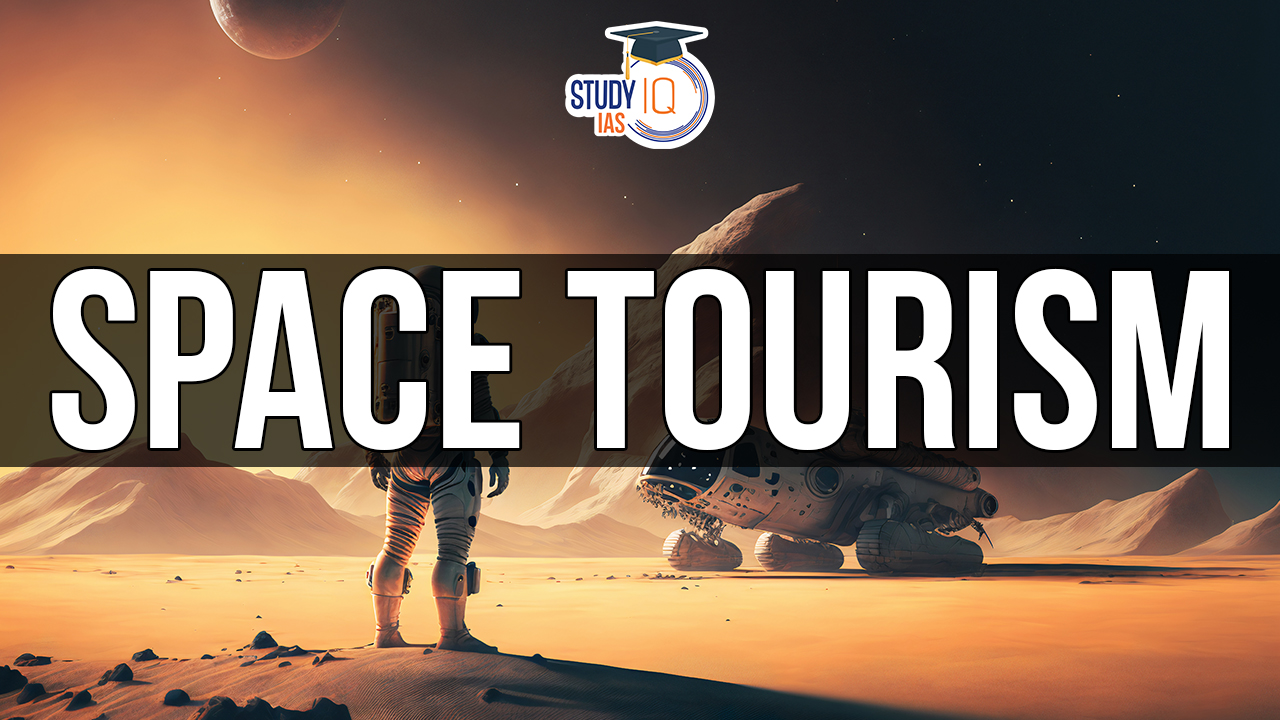Table of Contents
Context: Entrepreneur and pilot Gopi Thotakura is set to become the first Indian to venture into space as a tourist on the NS-25 mission of Blue Origin — a company founded by Jeff Bezos. Gopi Thotakura, along with five other space tourists, made a short recreational trip to space.
About the Recent Space Journey
- Spacecraft: Thotakura flew aboard Blue Origin’s spacecraft.
- Duration: The journey lasted about ten minutes.
- Altitude: The spacecraft reached a maximum height of approximately 105 km from Earth.
- Experience: Passengers experienced weightlessness and observed Earth from space.
- Nature of the Journey
- Sub-Orbital Flight: The flight crossed the Karman line (100 km altitude) but did not enter orbit.
- Quick Trip: It was one of the shortest and quickest space trips.
What is Space Tourism?
Space tourism refers to the commercial activity of sending private individuals into space for recreational, leisure, or adventure purposes. This sector has seen significant growth due to advancements in space technology and the entry of private companies.
Key Players and Milestones
- Blue Origin: Founded by Jeff Bezos, offers sub-orbital flights.
- Virgin Galactic: Founded by Richard Branson, also provides sub-orbital space flights.
- SpaceX: Founded by Elon Musk, aims for orbital flights and beyond, including potential missions to the Moon and Mars.
- Other Notable Companies: Companies like Space Adventures and balloon-based high-altitude flight providers.
- Definition: Space tourism encompasses providing tourists with the opportunity to venture into space, either for leisure, recreation, or business purposes.
Types of Space Tourism
There are two primary types of space tourism:
- Sub-orbital Flights: Passengers are taken just beyond the Kármán line, spending a few minutes in outer space before returning to Earth. Examples include Blue Origin’s New Shepard missions.
- Orbital Flights: Passengers travel much further, spending days or even weeks at altitudes of around 1.3 million feet. Space X’s Falcon 9 mission in September 2021 is an example of orbital space tourism.
|
Karman Line |
|
- Deep Space Missions: Future plans include trips around the Moon and potentially to Mars. These are more complex and require significant training and preparation.
Space Tourism Features
Suborbital Space Tourism
Orbital Space Tourism
Involves traveling into orbit around the Earth and spending a few days in space. SpaceX plans to launch an orbital flight with a private citizen in 2023.
Pros of Space Tourism
- Technological Advancement: Drives innovation in space technology, leading to improvements in spacecraft design, safety, and efficiency.
- Economic Growth: Generates revenue and creates jobs in the aerospace and tourism sectors. Stimulates investments in related industries.
- Public Engagement: Increases public interest and awareness of space exploration. Inspires the next generation of scientists, engineers, and explorers.
- International Collaboration: Encourages cooperation between countries and private companies in space exploration and technology development.
- Scientific Research: Provides opportunities for scientific experiments and research in microgravity environments.
Cons of Space Tourism
- Environmental Impact: Launches contribute to atmospheric pollution and carbon emissions. Potential for space debris accumulation.
- High Costs: Currently accessible only to the wealthy, creating a disparity in opportunities for space travel.
- Safety Risks: Inherent risks associated with space travel, including potential for accidents and exposure to harmful space radiation.
- Resource Allocation: Significant financial and material resources are required, which could be argued to be better spent on pressing issues on Earth.
- Regulatory Challenges: Developing and enforcing regulations to ensure the safety and sustainability of space tourism is complex and still evolving.
Examples and Recent Developments in Space Tourism
- Gopi Thotakura’s Flight: The first Indian space tourist, flew with Blue Origin on May 19, 2024.
- Historical Flights: Dennis Tito, the first space tourist, spent over seven days on the ISS in 2001. Japanese billionaire Yusaku Maezawa’s 12-day ISS trip in 2021.
- Commercial Operations: Virgin Galactic’s first commercial flight in August 2023, Blue Origin’s seven flights carrying 37 tourists to date.
- Future Prospects: SpaceX’s plans for orbital flights and missions around the Moon and Mars, alongside other companies aiming for similar deep space missions.
Space Tourism Ongoing Projects
Challenges in Space Tourism
- Cost Barrier: Space tourism remains prohibitively expensive, with tickets typically costing at least a million dollars, making it inaccessible to the majority.
- Environmental Impact: Studies suggest that space tourism could contribute to environmental damage, as rockets emit gaseous and solid chemicals directly into the upper atmosphere. Research from University College London (UCL), the University of Cambridge, and the Massachusetts Institute of Technology (MIT) highlights the warming effects of soot emissions from rocket launches.
- Safety Concerns: Despite stringent safety standards, space tourism poses inherent risks. Statistics indicate that approximately 3% of astronauts have died during space flight, underscoring safety as a paramount concern.


 National Technology Readiness Assessment...
National Technology Readiness Assessment...
 Justice Mission-2025: China’s Live-Fir...
Justice Mission-2025: China’s Live-Fir...
 Suryastra: First Made-in-India Long-Rang...
Suryastra: First Made-in-India Long-Rang...

























